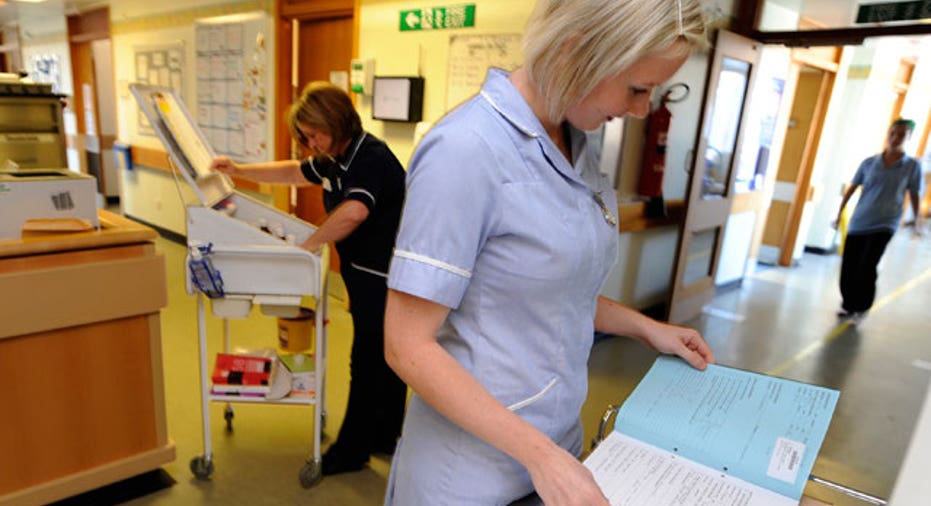New Research Looks to Help Diagnosis Shaken Baby Syndrome

Researchers and clinicians are hanging their hats on the development of a blood biomarker that will accurately--and in real time--diagnose abusive head trauma (AHT) in infants, the leading, but often hard to diagnose, cause of infant death from injury.
Establishing a standard, FDA-approved tool is an ambitious task, researchers say, but its capability to assist in diagnosis, prognosis and early and appropriate intervention comes with the potential of substantial payoff.
A medical breakthrough is just what AHT needs, according to clinicians who treat victims. With AHT, more commonly known as Shaken Baby Syndrome, infants are shaken violently by the shoulders, arms or legs; there is no blunt impact to the head, but the repetitive acceleration/deceleration forces can cause whiplash or bleeding within the brain and eyes.
Eighty percent of deaths from head trauma in infants and children younger than two years old are from inflicted injuries, according to a 2003 population-based study; and The Centers for Disease Control and Prevention (CDC) says 1 out of 4 of those afflicted die. Not to mention the neurologicand emotional outcomes for those who survive can be debilitating.
Beyond the statistics, a rather tangled web surrounds AHT. Often, AHT is triggered by a babys inconsolable crying, a normal developmental behavior, that experts say parents can learn to understand and cope with through pre-delivery education that teaches how to manage the frustration that comes with continuous crying.
The Upstate New York Shaken Baby Syndrome Education Program for all upstate New York parents verifies that education services are effective. In the seven years since its inception, the program resulted in a sustained 50% reduction in the incidence of abusive head injuries in the region.
The symptoms of shaken baby are often nonspecific and can include vomiting, extreme irritability, lethargy, poor feeding, breathing problems and convulsions--but no physical sign of head trauma. While evaluation CT scans or MRIs are available for infants, they pose radiation or sedation risk and are not routine.
In the worst case a kid comes in with a mild or moderate head injury and we miss it, and the child comes back in worse condition-or dead, says Dr. Michael J. Bell, associate professor critical care medicine and pediatrics and director of the Pediatric Neuro Critical Care Center at the Childrens Hospital of Pittsburgh of University of Pittsburgh (UPMC).
Clearly, the stakes are high. In Bells pediatric intensive care unit alone theres a 40% mortality rate among youngsters hospitalized with AHT as compared to a 5% to 6% rate of those who were hit by a car.
A Simple, Easy Test
It all gets back to an easy test that will allow us to look harder at high-risk kids, Bell says.
For starters, UPMC physicians are collaborating with scientists at Banyan Biomarkers LLC to develop that easy test with its real-time diagnosis at the point of care.
Both groups bring assets to the table.
The UPMC team has taken a national lead in biomarker development for pediatric TBI and pioneered its use for diagnosis, prognosis and therapeutic monitoring for children suffering from unintentional trauma as well as AHT.
Rachel Berger, associate professor of pediatrics at UPMC, came up with the idea to draw blood in the ER to test for AHT, extrapolating from the practice of using the cerebral spinal fluid taken from injured children to reduce pressure and analyze for inflammation.
We saw high levels of some markers in child abuse victims, says Dr. Patrick M. Kochanek, professor and vice chair, critical care medicine and director of UPMCs Safar Center for Resuscitation Research.
Berger was also motivated by the idea that medicine had developed blood tests to do surveillance on almost every organ but the brain.
She did several studies with some off-the-shelf kits to measure for brain substance proteins not normally found in blood. Their presence says that the proteins have broken through the blood-brain barrier, signaling that something is wrong.
We saw an impressive pick up of otherwise missed infants. We were able to think 'brain' rather than thinking this is a kid with colic, says Kochanek. Ultimately, Bergers team derivation of a panel of four different biomarkers had about an 85% accuracy rate, and this helped to guide subsequent patient therapy.
Banyan brings its work with the Department of Defense and its work on the development of a biomarker to identify mild TBI to the partnership.
Though encouraging, the current research activity does not automatically get a green light. FDA approvals require well-conducted, early-stage discovery and clinical trials with enough subjects for statistical conclusions; this can be very expensive and difficult and medically risky in pediatric populations, according to Dr. Jackson Streeter, Banyan CEO.
Ethical committee approvals, informed consent issues and sample collection in small infants and children present challenges, Streeter says. These can be more easily addressed at centers like UPMC with expert pediatric clinical teams than at community hospitals or academic centers without such teams.
Beyond that, there are the biomarkers themselves. Scientists cant just extrapolate these test to infants, Kochanek says. Adult biomarkers could require modification when analyzing the pediatric brain.
Funding is also a factor: It takes $100 to $200 million to get a biomarker FDA approved, Hayes says. Keeping money behind momentum can be a worry.
Nonetheless, the consortiums compass is constant: the earlier the identification of AHT the better the outcome. Says Hayes: We just want to make babies better.